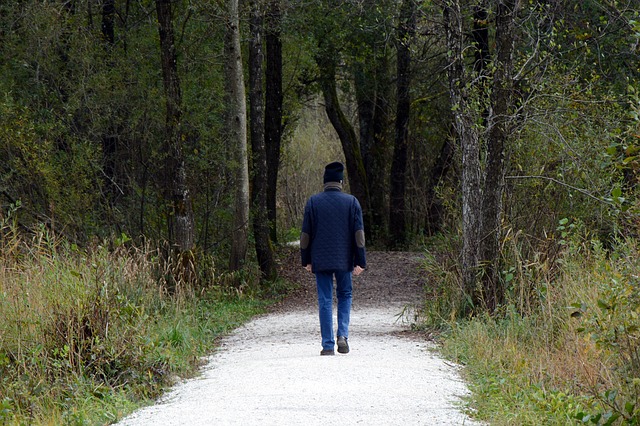Day four of the Radically Reframing Aging Summit challenged us to be open to the opportunities that aging presents. Each of the four presenters in their own lives and their own words demonstrated that they had reframed aging and viewed it positively as a period of possibility and creativity. They reinforced the view that aging requires personal adaption and a resetting of expectations as there are some things that they can no longer do. However, this does not preclude the potentiality of exploring new opportunities in work, play and life generally.
The interviewees – Lottie Tartell, Joseph C. Maroon, David Sinclair and William Shatner – stated that what is required to be open to opportunities as we age is not only examining our blind spots but also building mental and physical fitness to undertake new endeavours. William Shatner reinforced the mental openness required by reiterating the exhortation of Viktor Frankl to “Say Yes to Life” in spite of what happens when we are aging. Each of the interviewees have demonstrated in their own lives and their exploratory pursuits that physical age does not define us and our capacity to be open to opportunities. However, our mind plays a key role in what we enable ourselves to do and pursue.
- Lottie Tartell taught at Hofstra University for four decades and became an Adjunct Associate Professor in Economics and Geography. She indicated that even at age 96 she still undertook exercise classes, had an active social life and was engaged in community service as well as playing the violin. She had to deal with grief with the loss of her husband, Dr. Robert Tartell, in 2013 (after 65 years of marriage), as well as the loss of friends and other family members. She indicated that she did not dwell on getting old but did what she had to do each day. Lottie has been active in the Women’s Movement through Planned Parenthood and with Robert had set up the Tartell Family Foundation providing funds to many charities.
- Dr. Maroon is a neurosurgeon and author and completed a triathlon at the age of 81. He is noted for his research work and innovations in the area of concussion and neurotrauma. His recent book (2020), Square One: A Simple Guide to a Balanced Life – 2nd Edition, provides insights into his own early setbacks and resultant depression and encourages people to experience a joyful and creative life by achieving balance and avoiding burnout by prioritizing health, meaningful work, relationships that are strong and spirituality. In his interview, he urged people who are aging to “be mindful and aware of where they are“ in everyday life, especially in relation to sleeping patterns, exercise and diet. In his earlier publication, The Longevity Factor, he highlighted the beneficial effects of Resveratrol and other related natural substances found in red wine, green tea, berries and dark chocolate. Dr. Maroon is a strong advocate of mindfulness as a means of achieving awareness and life balance and living a long and healthy life. In his Summit interview, he maintained that the harmful effects of stress, such as elevated cortisol in our bodies, could be controlled by mindfulness practices such as Tai Chi, yoga, meditation and prayer.
- Dr. David Sinclair, genetics professor at Harvard Medical School, is the author of Lifespan: Why We Age – and Why We Don’t Have To. He maintains that the goal of research into genetics is not to prolong a life of suffering and disease but to achieve “prolonged vitality” – more active, happy and healthy years of life. In other words to “live younger longer”. Like Dr. Maroon, David takes a Resveratrol supplement daily and in his book on lifespan he explained in detail how the beneficial effects of this natural molecule were discovered, including in his own laboratory and in experiments on his kitchen table. He suggests that the beneficial effects of Resveratrol in extending lifespan can be enhanced when combined with intermittent fasting. In the interview, it was clear that “he practices what he preaches” in terms of exercise, diet, and lifestyle. He also spoke passionately about new discoveries in the area of “reverse aging” which he discussed at length in his lifespan book as well as the benefits of “delayed aging”, including the economic benefits for society.
- William Shatner epitomised the philosophy of “seize the day” (carpe diem) and spoke enthusiastically about the need to be open to the opportunities that aging presents. At age 90, he was the oldest person to travel into space and this was for him a life-changing event. He spoke passionately about his deep insight into the beauty and fragility of earth, a theme he had recounted in many other interviews. Bill, as he is known, is a prime example of living younger, longer – he is a multiple best-selling author, highly-awarded actor, film director, song-writer, charity worker, and rides horses competitively. He is a living inspiration of what is possible as we age. His positive philosophy on life is reflected in his latest album, Bill, and his latest book (2022), Boldy Go: Reflections on a Life of Awe and Wonder. In his Summit interview, he spoke extensively and enthusiastically about the wonder of earth and every living thing and demonstrated a “don’t know mind” as he marvelled at the unending mystery of life and earth’s ineffable beauty.
Reflection
To some extent the revelations on Day 4 of the Radically Reframing Aging Summit were overwhelming but also immensely inspiring. There was so much to think about and take on board. The presentations were energising and empowering in terms of living a fuller life, longer. There was very strong encouragement to be open to the opportunities afforded in aging which enable us to explore personal freedom and pursue unfettered creativity.
There was also very strong reinforcement of the message that as we grow in mindfulness, we enrich not only our mind and body but also increase the quality of our life and extend our lifespan. We can stay younger longer as a result of mindfulness practices that help us to manage stress effectively in our life, build a positive attitude, enhance our emotional regulation, develop wonder and awe, actively engage in social networks and undertake compassionate action.
_____________________________________
Image by Patrik Houštecký from Pixabay
By Ron Passfield – Copyright (Creative Commons license, Attribution–Non Commercial–No Derivatives)
Disclosure: If you purchase a product through this site, I may earn a commission which will help to pay for the site, the associated Meetup group, and the resources to support the blog.


